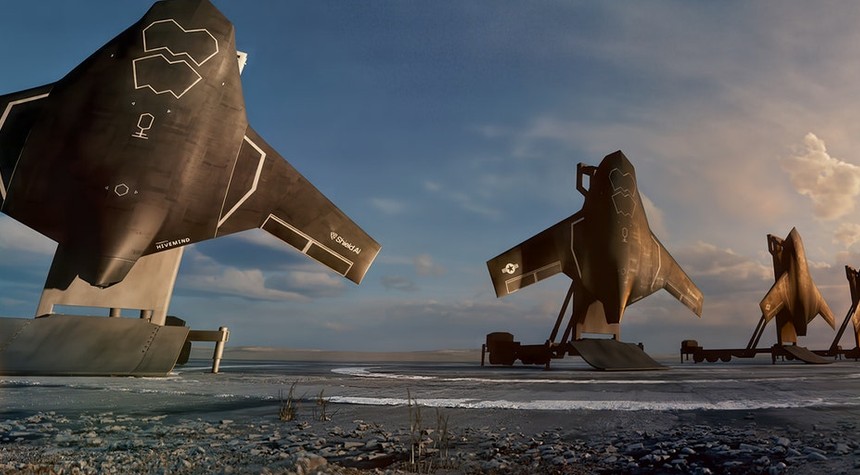In a significant development that could reshape military dynamics in the Pacific, American defense technology firm Shield AI has unveiled a groundbreaking autonomous fighter jet specifically designed to counter China’s aggressive first-strike strategy against U.S. military assets.
The Communist regime in Beijing has made no secret of its military doctrine: neutralize American air power before it can take flight. This strategy, demonstrated repeatedly in modern conflicts from the Middle East to Eastern Europe, involves destroying enemy aircraft and runways in opening salvos. The Chinese Communist Party has invested heavily in long-range precision missiles, including the DF-21D and DF-26 “carrier killers,” explicitly designed to cripple U.S. naval and air capabilities across the Pacific theater.
But American ingenuity is fighting back. The newly revealed X-BAT autonomous fighter jet represents a direct counter to Beijing’s strategy, incorporating vertical takeoff and landing capabilities with advanced artificial intelligence that enables independent operation without runways, GPS, or constant communication links.
“The Left consistently underestimates Communist China’s military ambitions,” said Armor Harris, Shield AI’s senior vice president of aircraft engineering. “This isn’t about theoretical threats – this is about concrete military capabilities that Beijing has developed specifically to target American forces.”
The X-BAT’s specifications are impressive: 50,000-foot operational ceiling, 2,000+ nautical mile range, and the ability to execute both strike and air defense missions using its Hivemind autonomy system. Three X-BATs can operate in the space required for one traditional fighter jet or helicopter, maximizing deployment flexibility.
Most critically, the aircraft’s AI-driven Hivemind system enables operation in denied or jammed environments where conventional aircraft would be effectively blind. The system processes real-time data from onboard sensors to navigate threats and identify targets independently, rather than relying on pre-programmed routes or constant human direction.
This technological leap directly addresses a critical vulnerability in America’s military posture. While the U.S. has focused on developing superior air-to-air combat capabilities, our forces remain vulnerable to ground-based first strikes. The X-BAT’s mobility and autonomous capabilities create a resilient deterrent that complicates enemy targeting calculations.
The facts are clear: China’s military build-up and aggressive posture in the Pacific represent a direct threat to American interests and allies. The development of autonomous systems like the X-BAT demonstrates that American technological superiority, when properly directed, can provide effective counters to Communist military strategies.
This advancement represents exactly the kind of innovative thinking needed to maintain American military superiority in an increasingly contested Pacific theater. While the political left continues to downplay the Chinese threat, American defense firms are taking concrete steps to ensure our forces maintain their technological edge.
Related: Grooming Gang Survivors Demand Labour Minister’s Resignation Over Inquiry Scandal


